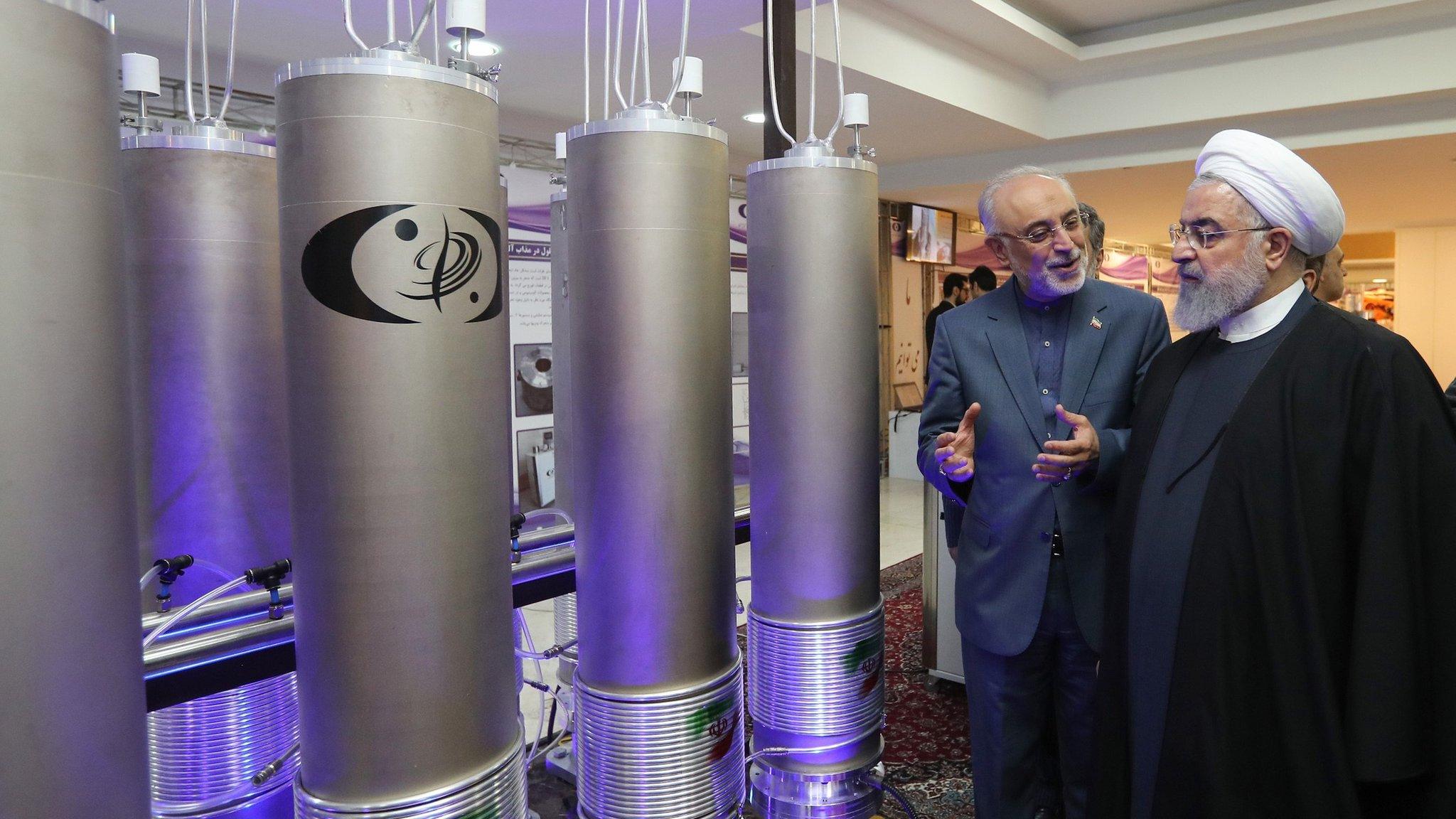Iran nuclear deal: Why US 'snapback' sanctions on Iran could fail
- Published
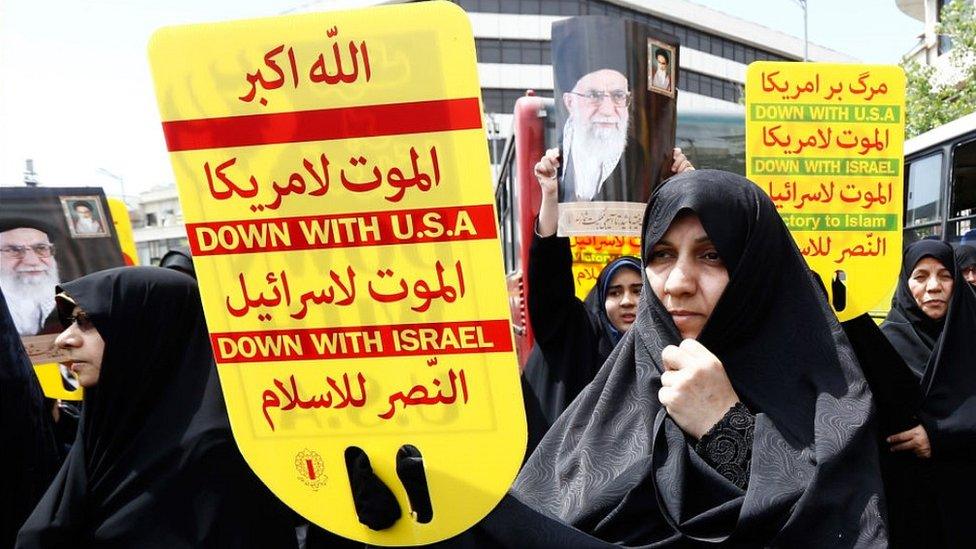
Iran sees a US-Israeli effort to wreck the nuclear deal
Even before he was elected, President Donald Trump called the Iran nuclear settlement of 2015 "the worst deal ever".
The US pulled out of the complex arrangement in May 2018 and has now attempted to trigger a ''snapback" - or re-imposition - of comprehensive UN sanctions against Iran that would scupper the entire deal.
Why does the deal matter?
The nuclear deal is the result of complex negotiations led by the US over many months. In essence, it requires Tehran permanently to renounce the development of nuclear arms, along with an acceptance of verification by the International Atomic Energy Agency (IAEA).
In return, the UN Security Council removed all previous sanctions on Iran. Instead, it imposed a fresh set of more limited sanctions. These would expire automatically in three stages, in parallel with Iranian compliance.
The first tranche of Security Council sanctions concerning conventional arms transfers is set to expire in a few weeks' time.
Restrictions on ballistic missiles are to run until 2023, with the remaining limits on nuclear transfers becoming obsolete 10 years after the conclusion of the deal, in 2025, subject to IAEA safeguards.
How did it all start?
When Washington withdrew from the deal, it pointed to Iranian attempts to destabilise its region, in particular in Lebanon, the Palestinian territories, Syria and Yemen. The US also alleged Iran was pursuing a nuclear programme likely to jeopardise the global non-proliferation regime.
The US re-imposed its own comprehensive set of sanctions unilaterally and started to threaten companies of third states with punitive measures unless they, too, complied.
Iran asserted this was a material breach of the deal. However, rather than ceasing participation in return, it continued compliance and claims to have invoked its dispute settlement procedure.
After a year of supposed fruitless settlement attempts, in 2019 Iran started a process of "reduced compliance" in answer to the US action. In particular it has enhanced its uranium production in excess of the permitted limits.
There were also Iranian tests of "space vehicles" which many consider disguised test launches of nuclear-capable ballistic missiles, along with violations of the restrictions on conventional arms transfers, in particular in relation to the Yemen conflict.
What is the Iran nuclear deal?
How did the other participants respond?
The deal was concluded between Iran and six states - the US, UK, France, Germany, Russia and China - with the EU supporting implementation.
EU states have tried to offset the losses caused for Iran by the US sanctions, in an effort to keep Tehran interested in compliance with its part of the bargain.
However, in January the European states in turn invoked the dispute settlement mechanism in view of Iran's by then seriously reduced compliance. China and Russia have sided with Iran, arguing that the US unilateral withdrawal is a material breach of the arrangement.
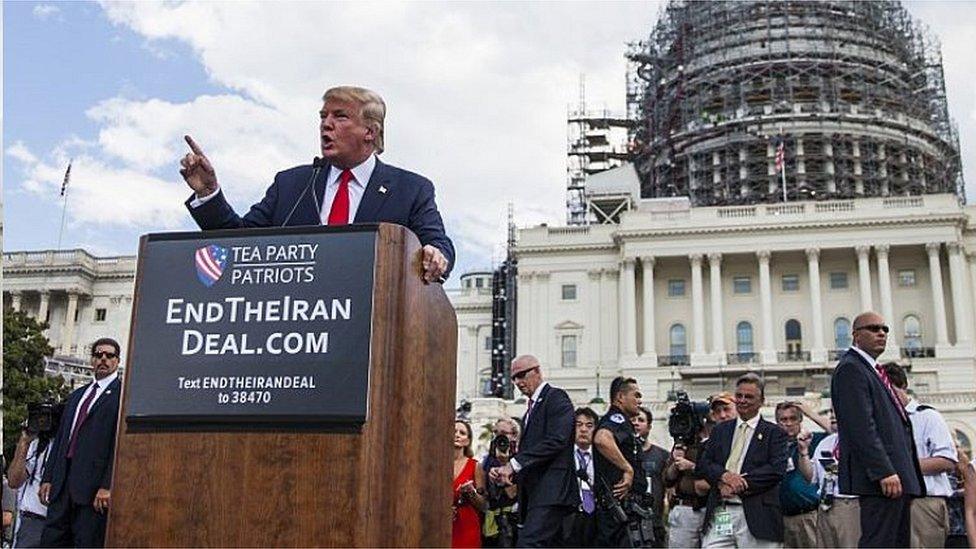
Ending the Iran deal was part of the Trump presidential campaign platform
What is the legal status of the nuclear deal?
It was concluded as a political arrangement - and most agree that it is not in itself a treaty governed by international law. This was due to Iran's concerns about its own sovereignty, given the explicit and permanent renunciation of nuclear weapons.
Moreover, the Obama administration would not have been able to conclude a binding treaty, given the difficulties of Senate ratification.
The deal is not without legal effect, however. The principle of good faith requires states not to act against their own commitments, even if not strictly legally binding in the first instance. Moreover, the deal was endorsed by UN Security Council Resolution 2231, with reference to Article 25 of the Charter, which obliges states to comply with Council decisions.
The provisions concerning the lifting and imposition of sanctions were adopted expressly under the mandatory enforcement provisions of Chapter VII of the UN Charter.
"US now in isolation over Iran," says James Clapper, former director of US national intelligence
What is the snapback?
International law provides for binding agreements, but is weak on their enforcement. In this case, this defect was cunningly turned on its head. While being unable to conclude a binding treaty, the US insisted on a very powerful enforcement mechanism of the undertakings of Iran, whether strictly binding or not.
The difficulty was that once the comprehensive sanctions were lifted, a fresh decision in the Security Council to impose new ones, in case of Iranian non-compliance, would have been required.
The same would have been needed in order to extend the sanctions imposed under resolution 2231 beyond their respective sunset clauses.
The US was aware, after the controversy over a so-called "second resolution" concerning Iraq before the US invasion of 2003, that other states might veto such a step. Hence, the US sought to reverse this power imbalance through the snapback provision.


How does the snapback work?
After invoking the dispute settlement mechanism, a "participant state" in the deal can allege an instance of "significant non-performance" by Iran. After 30 days, such a claim will result in the automatic re-imposition of all UN sanctions as they existed before the deal became operative, unless the Council adopts a resolution that would suspend that effect.
If no individual Council member proposes such a suspensive resolution within 10 days, the Council President must put one forward. The US could easily veto such a draft and the full set of sanctions would automatically "snap back", effectively terminating the nuclear deal with Iran.
How far has the process gone?
In early August the US put forward a resolution that would have simply extended the arms embargo provided for in the deal indefinitely, instead of expiring this autumn. This step in itself suggests that the US may have had hesitations relating to its snapback argument.
However, that proposal was overwhelmingly defeated in a Council vote. Last week, US Secretary of State Mike Pompeo formally invoked the snapback procedure.
How has the Security Council responded?
The other participants in the deal immediately wrote to the Council president, stating that the US had withdrawn from it and could thus not rely on the snapback procedure. This view was supported by virtually all other members of the Council, other than the Dominican Republic, which has reflected the US position throughout.
The Council president then said that, given the large majority of views expressed in this sense, he did not feel in a position to take further action on the US application.
What are the positions of the sides?
The US and Iran have both submitted extensive legal arguments in favour of their respective positions.
The US argues that it has not violated the deal as it is not legally binding. Moreover, paragraph 10 of Security Council Resolution 2231 names the US as a "participant state". According to Washington, that definition is independent of actual participation in the underlying arrangement.
Hence the US retains formal participant status even after having ceased to participate. Accordingly, Washington can invoke the snapback process reserved for "participant states", as the obligations contained in the deal, and the snapback provision in the Security Council resolution, are claimed to be entirely separate.
On the other hand, all the other states involved assert that the US cannot rely on the snapback, because it has withdrawn from the deal and is no longer a "participant" - you cannot eat your cake and have it too, as the Russian UN ambassador put it.
Who is right?
When withdrawing from the deal, President Trump expressly decided to end "the participation of the United States" in the arrangement. This unhappy phrasing, repeated by Secretary of State Pompeo, makes it difficult to argue that the US remains a participant only for the purposes of the snapback.
John Bolton himself, National Security Advisor at the time of the withdrawal, asserts that this view is "legally incorrect", as do all the other participant states and the EU.
The finding of the Security Council president, undoubtedly based on legal advice, also points in that direction. Moreover, the admittedly ingenious US attempt to isolate the definition of "participant state" from the question of which states are actually participating in the deal does not work.
Clearly the deal and the snapback mechanism contained in Resolution 2231 are interrelated - the latter only exists to enforce the former.
That connection is also confirmed by the fact that, according to the underlying deal which must inform the interpretation of Resolution 2231, states wishing to invoke the snapback must first try the dispute settlement procedure that is part of the deal. That procedure is only available to states actually participating.
Hence, the US has excluded itself from the snapback mechanism. That result is in line with the logic of the relevant provisions: the snapback was designed to ensure the integrity of the arrangement, not as a tool to unhinge and destroy it.
Could the US have avoided this result?
Ironically, if the US had played by the rules negotiated by the Obama administration, it could have achieved its aims. Instead of withdrawing as a participant state in 2018, it could have alleged serious non-compliance and engaged in the required dispute settlement attempts. These having remained unsatisfactory for the US, it could then have triggered the snapback, while still being unquestionably a "participant state".
Afterwards the US could have resigned from the deal, leaving the comprehensive Security Council sanctions in place indefinitely. When seen from this perspective, John Bolton's verdict that the US administration is acting "foolishly" is difficult to dismiss out of hand.
What happens next?
It has been suggested by a former UN assistant secretary-general for legal affairs that the Council might simply refuse to accept the snapback proposal onto its agenda.
More likely, the Security Council may simply ignore the invocation of the snapback, arguing that Washington no longer has the standing of a participant state.
That, however, leaves the real concern about Iranian "reduced" compliance, which is now turning more critical, unaddressed. If no diplomatic solution is found over the next few months, the entire deal will remain in jeopardy, snapback or no snapback.
Marc Weller is Professor of International Law and International Constitutional Studies at the University of Cambridge. He is also a barrister with Doughty Street Chambers.
- Published21 May 2018
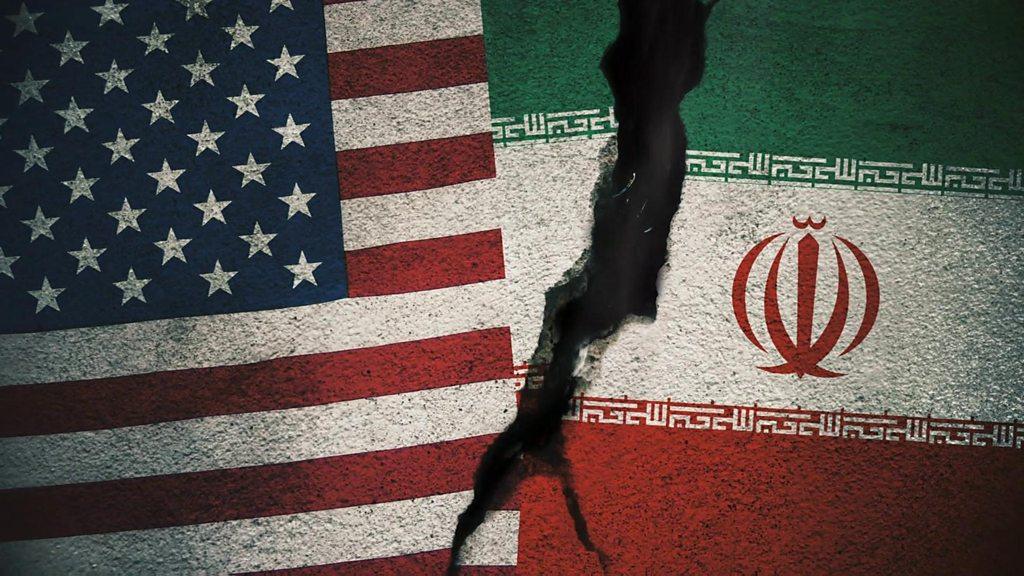
- Published20 May 2019

- Published26 August 2020
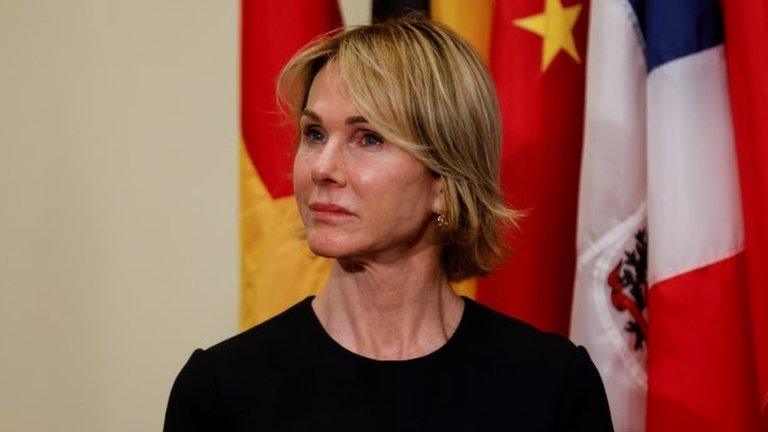
- Published16 November 2021
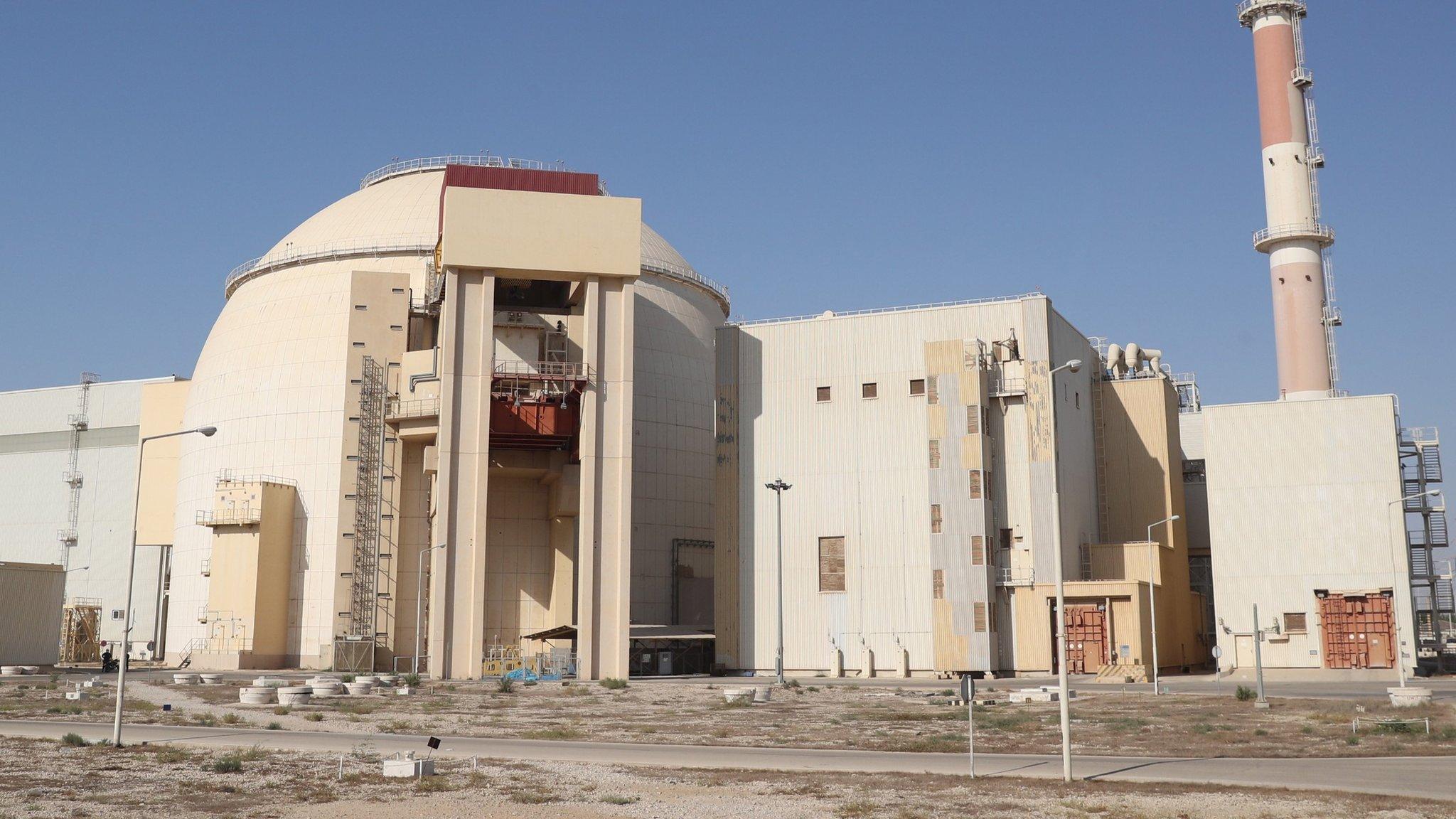
- Published30 April 2021
